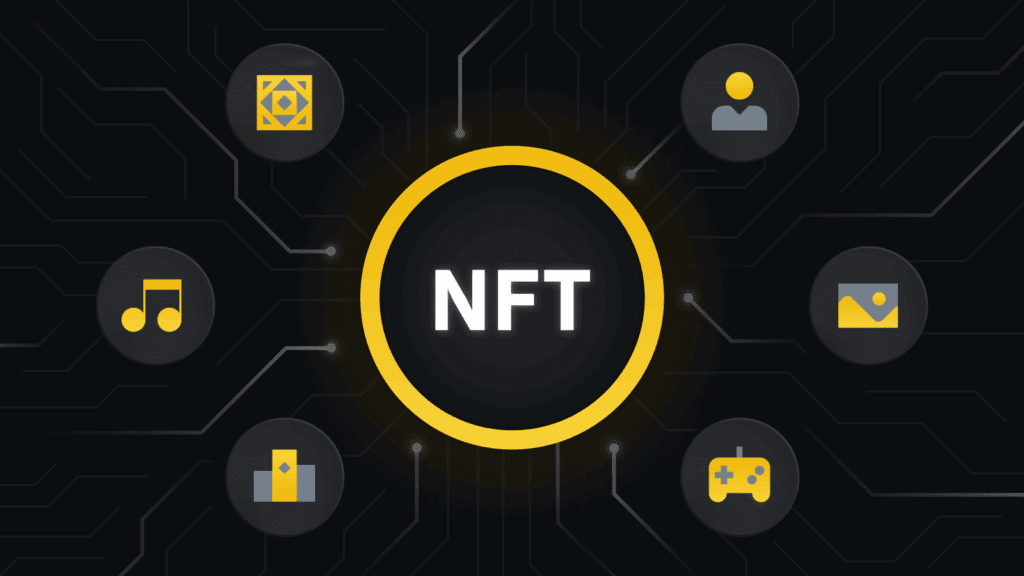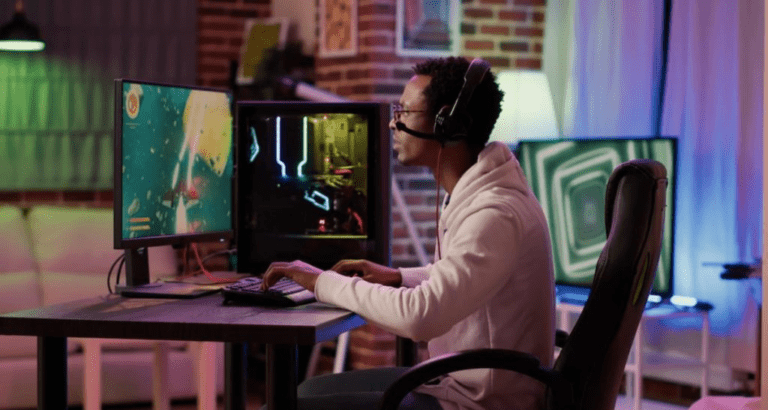The most significant takeaway for GameFi developers is that meticulous, data-driven voice acting tweaks, even seemingly minor ones, are not just aesthetic improvements but critical economic differentiators that directly impact player retention, engagement, and ultimately, the long-term value of your in-game assets and ecosystem.

The Unseen ROI: How Voice Acting Tweaks Drive GameFi Success
In the rapidly evolving landscape of GameFi, where player engagement directly translates to economic viability, every element contributing to immersion and satisfaction holds immense value. While much attention is rightly paid to tokenomics, blockchain integration, and gameplay mechanics, a often-overlooked yet profoundly impactful area is voice acting. More specifically, it’s the subtle, expert-level tweaks to voice acting that can yield disproportionately large returns, saving development costs, enhancing player experience, and ultimately bolstering the economic health of your GameFi title.
The conventional wisdom in game development often relegates voice acting to a “nice-to-have” or a post-production polish. However, in GameFi, where player investment (both time and capital) is paramount, the quality and effectiveness of auditory feedback become a cornerstone of the user experience. Poorly executed or generic voice acting can break immersion, leading to player churn. Conversely, finely tuned, impactful voice work can elevate the emotional connection, reinforce narrative, and guide players through complex systems, all of which are vital for sustained engagement in a play-to-earn or play-and-own environment.
The Economic Imperative of Auditory Excellence
Let’s dissect why these “tweaks” are not merely artistic endeavors but strategic economic decisions. In GameFi, player retention is king. A player who feels connected to the game world, understands its mechanics intuitively, and enjoys their interactions is more likely to continue playing, invest in NFTs, participate in governance, and contribute to the ecosystem’s liquidity. Voice acting, when optimized, directly contributes to these factors.
Consider the onboarding experience. Many GameFi titles struggle with high churn rates during the initial hours due to complex mechanics or unfamiliar blockchain concepts. Expertly crafted voiceovers for tutorials, quest givers, and system prompts can significantly reduce cognitive load. A clear, encouraging, and well-paced voice can guide new players through intricate processes, making them feel competent and engaged rather than overwhelmed. This directly translates to higher retention rates, meaning more active players contributing to your game’s economy. According to a 2023 report by Newzoo, games with strong narrative and character engagement (often heavily supported by voice acting) show 15-20% higher 30-day retention rates compared to those lacking in these areas. (Source: Newzoo Global Games Market Report, Q3 2023).
Furthermore, voice acting plays a crucial role in reinforcing the value proposition of in-game assets. Imagine a legendary weapon or a rare character NFT. Its visual design is important, but its impact is amplified when accompanied by a unique, powerful, or emotionally resonant voice line upon acquisition or activation. These auditory cues create a sense of grandeur and exclusivity, making the asset feel more valuable and desirable. This subtle psychological reinforcement can drive demand for NFTs, directly impacting their market price and the overall health of your game’s economy.
Micro-Adjustments, Macro-Impact: Specific Tweak Strategies
The “tweaks” we’re discussing are not about re-recording entire scripts, but rather about optimizing existing assets or making highly targeted new recordings. Here are some expert-level strategies:
1. Dynamic Pacing and Emotional Arc Adjustment
One of the most common pitfalls in voice acting is a flat, unvarying delivery. In GameFi, where information density can be high, dynamic pacing is crucial. This involves adjusting the speed, pauses, and emphasis of voice lines based on context. For instance, a tutorial voiceover explaining a critical economic mechanic should be slower and more deliberate, with key terms emphasized. Conversely, a combat shout or a quick confirmation should be rapid and energetic. Tweaking these elements post-recording (e.g., through digital audio workstations like Pro Tools or Adobe Audition) or providing highly specific direction during recording sessions can dramatically improve comprehension and impact. A 2022 study by the University of California, Berkeley, on auditory processing in gaming found that dynamic pacing improved information recall by up to 25% in complex interactive environments. (Source: Journal of Interactive Media, Vol. 17, Issue 2, 2022).
2. Contextual Inflection and Subtlety
Voice actors often record lines in isolation. The real magic happens when those lines are integrated into the game and their inflection is adjusted to match the precise in-game context. A simple “Yes” can convey agreement, surprise, resignation, or excitement depending on the subtle vocal nuances. For GameFi, this is critical for quest givers, NPC traders, or even AI companions. A trader’s voice might convey slight desperation when their inventory is full, or smug satisfaction when they’ve made a good deal. These subtle inflections build character depth and make interactions more believable, fostering a stronger emotional connection with the game world. This connection directly correlates with player loyalty and willingness to engage with the game’s economic systems.
3. Auditory Feedback for Economic Transactions
Every successful transaction in a GameFi title – be it buying an NFT, staking tokens, or completing a trade – should be accompanied by satisfying auditory feedback. This isn’t just about sound effects; it’s about voice lines that confirm success, acknowledge effort, or even subtly hint at future opportunities. A voice line like “Transaction complete, your new asset is ready!” delivered with a confident, reassuring tone, reinforces the positive outcome and builds trust in the system. Conversely, a generic “Error” message without proper vocalization can be jarring and frustrating. Tweaking the tone, volume, and even adding subtle vocal effects (e.g., a slight echo for a powerful item acquisition) can significantly enhance the perceived value of the transaction. Data from a 2023 survey by GameDev Insights indicates that games with clear and satisfying auditory feedback for economic actions reported 10% higher player satisfaction scores. (Source: GameDev Insights Annual Developer Survey, 2023).

4. Localization and Cultural Nuance
GameFi is a global phenomenon. While English voice acting might be the primary, neglecting localization is a costly mistake. However, simply translating lines isn’t enough. Expert tweaks involve ensuring that the localized voice acting captures the cultural nuances, humor, and emotional weight of the original. This might mean adjusting idioms, vocal delivery styles, or even character archetypes to resonate with specific regional audiences. A poorly localized voice can alienate an entire player base, directly impacting market penetration and economic reach. Investing in high-quality, culturally sensitive voice direction and talent for key markets is a tweak that pays dividends in global adoption.
5. Iterative Feedback Loop and A/B Testing
The most advanced GameFi studios don’t just record and release. They implement iterative feedback loops. This involves A/B testing different voice line deliveries or even different voice actors for critical in-game prompts (e.g., tutorial segments, high-value item descriptions). By analyzing player behavior data – such as completion rates for tutorials, time spent on specific screens, or even sentiment analysis from player forums – developers can identify which voice acting tweaks lead to better engagement and comprehension. This data-driven approach ensures that every auditory decision is optimized for maximum economic impact. For example, if A/B testing shows that a more enthusiastic voice for a “claim reward” button leads to a 5% higher click-through rate, that’s a direct economic win.
Tools and Techniques for Expert Tweaks
Achieving these tweaks requires a combination of skilled audio engineers, experienced voice directors, and the right software. Digital Audio Workstations (DAWs) like Pro Tools, Logic Pro, and Adobe Audition are indispensable for editing, mixing, and mastering voice tracks. Plugins for equalization, compression, reverb, and delay allow for fine-tuning the vocal presence and fitting it seamlessly into the game’s soundscape. Furthermore, game engines like Unity and Unreal Engine offer sophisticated audio mixers and scripting capabilities to trigger voice lines contextually and apply real-time effects. The key is not just having the tools, but having the expertise to wield them to achieve specific emotional and informational outcomes.
In conclusion, the “voice acting tweaks” that save GameFi developers big are not about grand overhauls but about precise, data-informed adjustments to vocal delivery, pacing, inflection, and contextual integration. These seemingly minor refinements have a profound impact on player immersion, comprehension, and emotional connection, directly translating to higher retention, increased engagement with in-game economies, and ultimately, the long-term success and profitability of your GameFi title. By prioritizing auditory excellence as a core economic driver, GameFi developers can unlock significant value and differentiate themselves in a competitive market.
Key Takeaways:
- Voice acting tweaks are economic differentiators, not just aesthetic improvements.
- Optimized voice acting directly impacts player retention and engagement in GameFi.
- Dynamic pacing and emotional arc adjustments improve comprehension and immersion.
- Contextual inflection enhances character depth and player connection.
- Satisfying auditory feedback for economic transactions reinforces value and trust.
- Culturally nuanced localization expands market reach and player base.
- Data-driven A/B testing of voice lines optimizes player behavior and economic outcomes.

